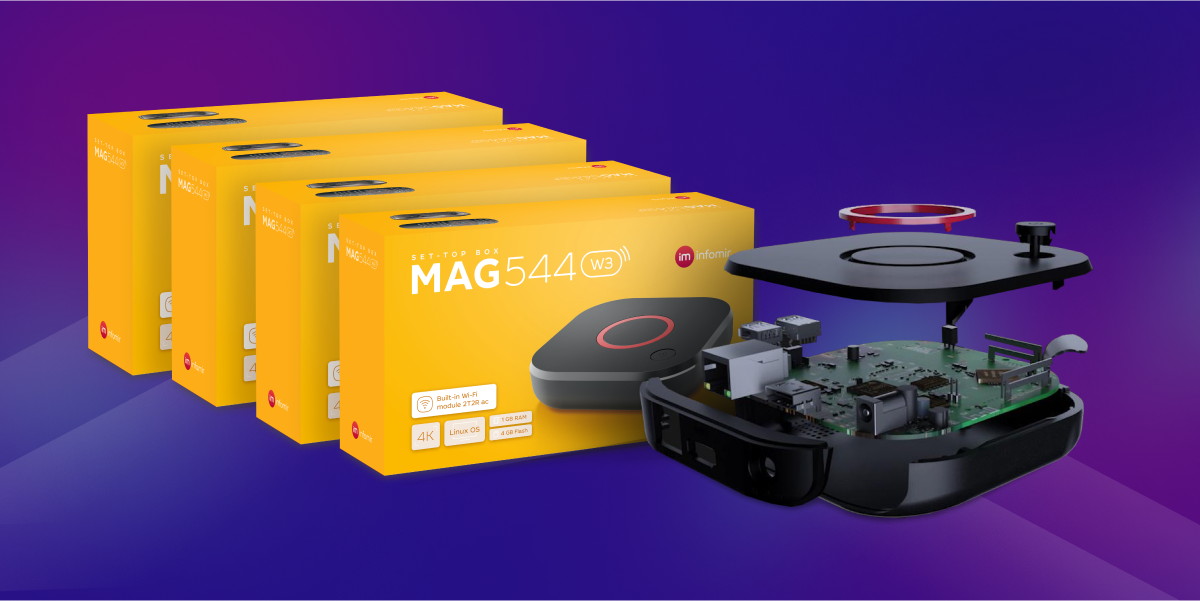Product request
You are looking for a solution:
Select an option, and we will develop the best offer
for you
Modular Testing of Set-Top Box Batches Before Delivery: Why Distributors Need It

The IPTV set-top box market is booming: purchase volumes are growing every year, new hardware revisions and firmware releases are accelerating, and supply chains are getting longer.
In this environment, where the IPTV product lifecycle control is vital, distributors become the key link connecting Asian OEM manufacturers, European integrators, and local operators. The shorter the time “from container to subscriber,” the greater the pressure on quality. Any hidden defect in a batch that is missed during IPTV compliance checks can surface after service deployment, undermining the operator’s business model and the reputation of everyone involved.
This is where modular testing IPTV devices comes into play—a thorough process of checking each set-top box or representative blocks within a batch. It’s not just about turning the device on and off; it’s a systematic cycle in which hardware modules (CPU, NAND, HDMI), network stacks, DRM mechanisms, software updates, long-term playback stability, and dozens of other parameters are tested.
What Sets Modular Testing Apart from Random Sampling
Traditional random sampling relies on statistics: if five selected units from a thousand show no defects, the batch is considered good. However, for performance testing IPTV boxes packed with features, this method is vulnerable. Issues often appear “pointwise”, for instance, a specific chip revision “B2” might overheat only when Wi-Fi 6 and the USB port are used simultaneously, or the firmware might freeze after a hundred standby cycles.
To improve IPTV hardware quality control, modular STB testing for distributors treats the device as a set of functional blocks and creates a test bench where each block is stress-tested: the video decoder plays streams with variable bitrates, the power controller handles voltage fluctuations, and the Bluetooth module connects to peripherals via automated scripts.
The key advantage of this type of set-top box batch testing is that the test covers not an abstract “device as a whole,” but specific usage scenarios—in other words, an IPTV device inspection that dramatically reduces the chance of elusive failures for the end subscriber.
The Economics: The Cost of Defects Hits Later
For a distributor, any RMA return triggers a chain of logistics, compensation negotiations, and additional spare parts inventory. If the average gross margin per unit is only €3–4, a return and exchange can eat up €15–17 per unit—not to mention the operator’s indirect losses from subscriber downtime.
A modular test bench is a one-time expense: buying the equipment, stress-test software licenses, and an engineer’s time. But it pays off as soon as it prevents just a few percent of defective units in the first container batch. Moreover, test data can help negotiate better terms with the vendor or secure free replacement boards—the argument “we have everything documented in reports” is taken seriously by manufacturers.
Reputational and Contractual Risks: A Time Bomb
An OTT operator sells a service, not hardware. If a set-top box freezes during the Champions League final broadcast, the subscriber leaves the operator—not the manufacturer. The reputational blow from not thoroughly testing IPTV features will quickly return to the distributor, having recommended the model and guaranteed its readiness for mass deployment.
Operator contracts increasingly include SLA clauses on acceptable DOA rates and incident response times. Modular testing meanwhile creates a digital trail, including reports with temperature graphs, network activity logs, and screenshots of cyclic reboots. These documents substantiate your OTT box testing process and can be attached to the contract as part of due diligence, reducing risk exposure and legal liability.
Test Data as a Tool for Logistics and Service Optimization
Each test run collects telemetry regarding temperature under different operating modes, average power consumption, and NAND read error rates. Over time, this becomes a knowledge base revealing, for example, that devices from a specific OEM plant need extra ventilation or that the batch assembled in September is sensitive to power surges.
Such insights allow the distributor to adjust packaging, choose alternative delivery routes (cold-resistant containers for northern regions), or push for a PCB revision.
Furthermore, predictive maintenance can be offered to operators: if the algorithm detects that after 1,200 hours of operation, 5% of devices show Wi-Fi module degradation, the distributor can pre-stock spare parts and schedule technician visits. This turns the testing lab from a “cost center” into a profit center.
Practical Recommendations and Conclusion
First—integrate the test bench at the sample evaluation stage. This helps identify weak points and make changes before the bulk order. Second—automate reporting: JSON-formatted reports can be easily uploaded into BI systems and serve as evidence in claims to the manufacturer. Third—keep evolving: update test scenarios as new services appear (e.g., AV1 or Matter).
Ensuring hardware consistency by the modular testing of set-top box batches before delivery transforms a distributor from a “transfer point” into a quality gatekeeper. Through early defect detection, IPTV set-top box reliability can be dramatically improved, reducing financial losses, strengthening relationships with operators, and creating a new competitive edge.
In a world where a subscriber switches services with a single click, the stability of the heart of the system—the set-top box—becomes the silent factor that retains customers. Ensuring IPTV quality management by investing in a test lab means investing in the long-term loyalty of the entire market.
Recommended

IPTV and E-commerce: Prospects of Built-in Online Stores on the TV Screen
Over the past few years, IPTV platforms have gone beyond being merely a channel for delivering television content.

How to Properly Organize Backup Servers for IPTV Streams
The IPTV and OTT market is growing rapidly, with the quality of broadcasts continuing to improve, the number of channels increasing, and the functionality of set-top boxes and applications expanding.

The Evolution of Codecs: From H.264 to AV1 and VVC — What Should Operators Choose?
Over the past decade, the video market has undergone a rapid shift from linear TV to flexible IPTV/OTT services, where image quality and delivery efficiency play a crucial role.










